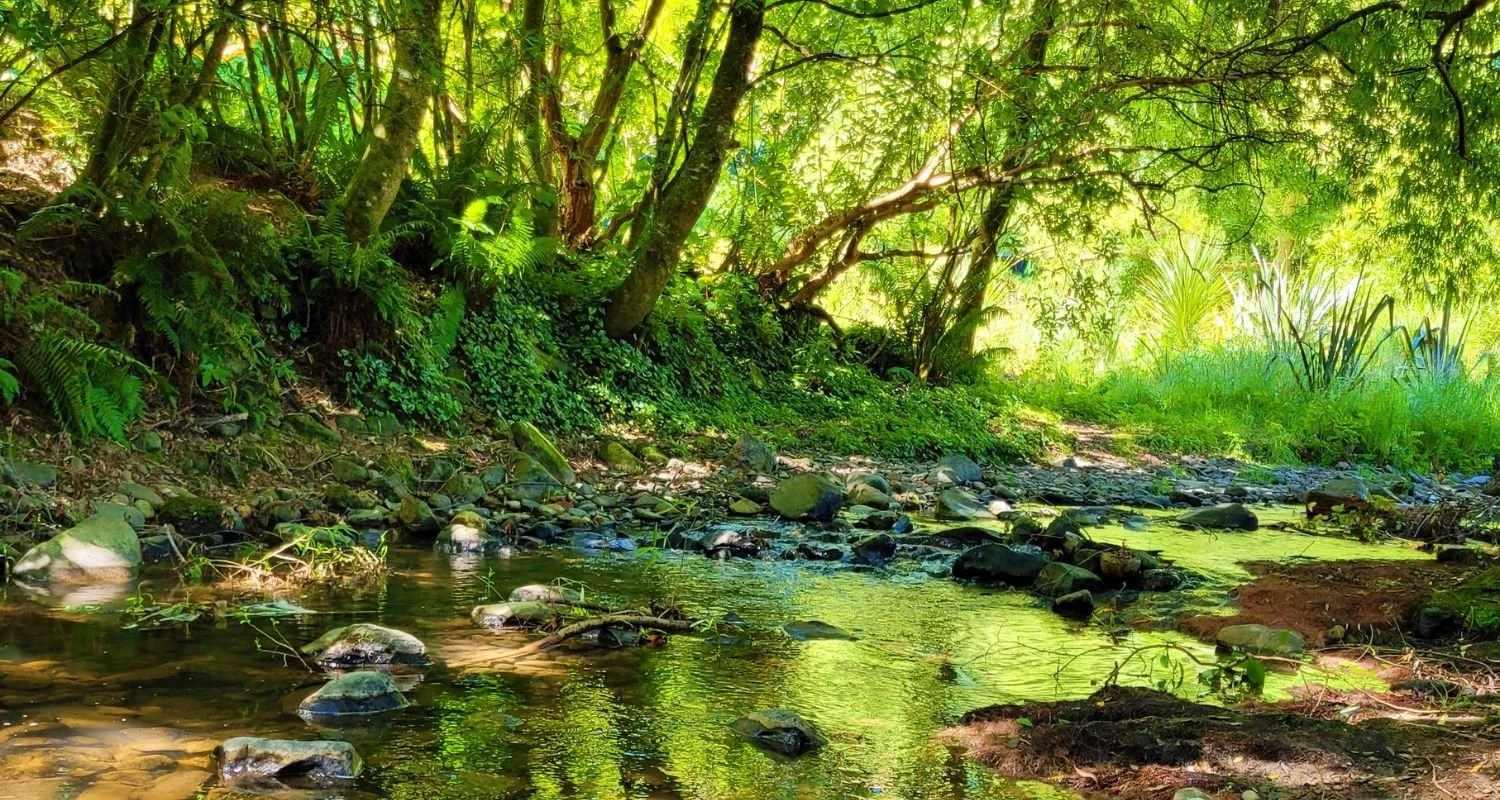North East Valley’s hidden gems
The gentle Lindsay Creek flowing through Chingford Park.
Written by Clare Cross, Open Valley Urban Ecosanctuary coorindator.
Throughout Dunedin, many people are looking after their own and public spaces through wildlife-friendly actions such as trapping, planting and weeding. The Lindsay Creek Catchment is a special place to me and receives a lot of care by people who are looking after its environs. Here’s two of my favourite places in this area.
Bethunes Gully
There’s something quite special about how close Bethunes Gully is to the edge of the city. It really is just a stone's throw away. Passing under the gateway at the entrance, and down a short driveway opens into a clearing. Children will often be playing on the swings, or enjoying the tranquillity of the bubbling Lindsay Creek. Tūī and bellbirds are usually heard singing amongst the trees. Kereru make their presence known, swooping around with a satisfying, “whomp, whomp” sound.
Learn about some of the creatures that call the freshwater of Lindsay Creek their home on the signage as you arrive. Follow the track up Mount Cargill. Notice as the stands of Douglas fir turn into native forest, which then gives way to scrub. Dotted along the track edges are wooden boxes that house traps for mammalian predators, managed by the team from the Halo Project and their dedicated volunteers. 70 possums and more than 480 rodents have been removed from this area.
Fantails will often accompany walkers on their journey, tweeting away and gobbling small snacks, stirred up by passing footsteps. Every now and then the radio tower will peek through the forest, a beacon of the destination. At the top, reap the reward, an amazing 360° view spanning Blueskin Bay, Aramoana, Dunedin Harbour, the centre of town and North East Valley.
To find Bethunes Gully, head all the way up north East Valley, taking the left road at the fork and head along Norwood Street. As the road starts going up the hill, turn left onto Cluny Street. The entrance gateway reads, “Bethunes Gully”.
Chingford Park
Lindsay Creek with sunny reflections on the water.
Right in the heart of North East Valley and the Lindsay Creek Catchment is a somewhat hidden gem: Chingford Park. Through the gate, past the sports fields and playgrounds, the driveway crosses over Lindsay Creek into the disc golf course and a walking track through the forest. The Stables building gives a hint to some of the history.
There’s a few different patches of forest, places where the understory is brimming with ferns, coprosmas, tree fuschia and other natives and the forest floor dotted with various types of fungi.
At night, the growling from the resident possum population has hushed by the hard work of volunteer trappers. The occasional flash of yellow or white is the location of a trap - more than 100 possums and 50 rats have been removed - that are serviced by local volunteers and staff from City Sanctuary and the Halo Project.
Chingford Park with creek plantings on the left.
In other parts of the park, the indomitable volunteers turn what once was a large blackberry thicket into a lovely native paradise. The fields are often shared by a few different bird couples, sometimes a pair of paradise shelducks, sometimes spur-winged plovers. The entrance from the road belies how large this park really is once you’re inside.
To find Chingford Park, look for the road signs that read, “Stables” and “disc golf”. Enter through the iron gates.



